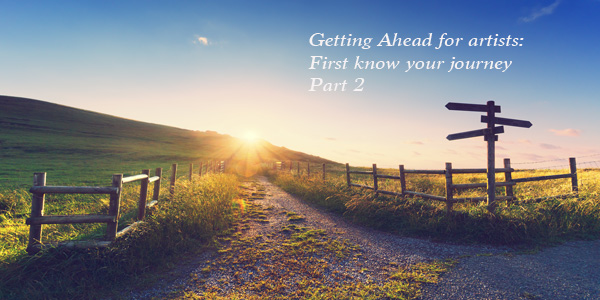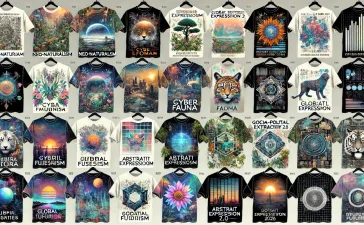No matter what stage you’re at in your art career, having a sense of purpose and direction is good. You can’t continually avoid thinking about or talking about things as people will want to know the story behind your work.
Unfortunately for many artists, figuring out why they create is not an easy task. They’ve never really thought about it and wouldn’t know where to start.
The good news: there’s always an answer and the majority of artists create art purposefully, not randomly, and are perfectly capable of verbalizing it. Art has a beginning, a middle and an end, and you can figure the cognitive component out.
Artists need to get back in touch with their creative process. Perhaps you’ve been creating in a routine manner for so long, you’ve just plain forgot.
No matter your circumstances, you can approach this discovery/rediscovery in several ways.
Try going back to when you first decided to become an artist and reconstruct your career forward, or start at the present and deconstruct backward. Or take a finished piece of your art and reconstruct its story from conception to completion.
You don’t have to think about all this while you’re making art; you can do it after. Contemplating the evolution of your artistic existence to increase your self-awareness is always good.
A great way to start is to write, stream-of-consciousness style, on whatever comes to mind about your art, life as an artist, your creative process, your work and so on.
Don’t be self-conscious, don’t be afraid, just do it. You’ll have plenty of time to sort it all out later. This may seem airy-fairy, but you have to start somewhere. If you take this exercise seriously, you’ll accumulate some pretty interesting insights.
You’ll see that every moment in the production of your art, and in the progression of your life as an artist, happens for a reason and has its own significance. Even if your art is about randomness, it’s random for a reason, a reason you’ve decided.
If you’re completely stuck, get someone who knows something about art to jumpstart the process by asking relevant questions, seeing whether they can follow it, and then dialoguing with you. Some outside objective perspective may be what you need.
You might also try acting as your own outside perspective. Say it out loud instead of writing it, listen to yourself talk or maybe even record yourself.
That way, you can stand back and reflect on what you’re saying while you’re saying it, or after you’ve said it. Talking things out can be more enlightening than thinking or writing it in silence.
Here are some of the questions to help you get start:
- When do you create art?
- Is it at a regular time or randomly?
- Are you acting on inspiration?
- What triggers the process?
- Do you have a routine or a pattern?
- What’s going on in the background while you’re creating your art and how does that influence you?
- How does your art evolve?
- Are you intentional or do things materialise as you go?
- What do you think about creating your art worthwhile and why, not only to you, but to others?
- Is your art about you, your thoughts, philosophies, themes, events or other people?
- Does it tell a story?
- How do you know when you’re done?
- Is there a logical progression between one work to the next?
- Or is there little or no connection?
Identify and clarify your why, reason or purpose, focus on your direction and desire and, ultimately, create art that impacts not only you but others. The more you know about yourself and your creative process, the more effectively you can actualise your ambitions.
People will be attracted, they’ll get involved, they’ll want to know more. And you’ll have the answers – good ones.
Remember, to get there you need to discover, feel and sensitise yourself to the journey ahead.
Creative Coach, Art business coach, artist business coach, art business coaching, creative coaching, creative business coaching, Design business coaching, business coaching for artists, designers





